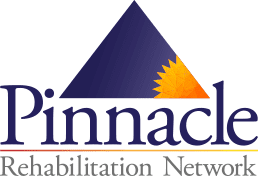Plainly stated, craniosacral therapy (CST) is not medicine. It’s silly, non-scientific, most certainly ‘alternative’ and, while as far as massages go it can it be quite relaxing, but it is still medical fiction. Bunk. Fantasy. The Easter Bunny, Tooth Fairy, and Santa can get craniosacral therapy. If you are dealing with any real aches or pains, you should not.
Steve E. Harman and James M. Norton have said it best: “CST bears approximately the same relationship to real medicine that astrology bears to astronomy.” (1) Before losing your head above the clouds, let’s provide an understanding as to why this ‘therapy’ isn’t much therapy at all.
CST is a holistic therapy, intended to treat the whole person by considering mental and social factors, rather than physical symptoms of disease. Invented in the 1930s, CST involves manipulation of the skull bones and the sacrum to relieve pain. And, as it is a holistic technique, CST relies on concepts that are 100% subjective – energy, balance, harmony, rhythm. These therapists are detecting ‘rhythm’ and ‘balance’ of ‘flow’ solely with their hands. They aren’t using medical instruments or technology to measure this ‘harmony’, just their fingertips. There is no science, no research, no systematic objective measurement. It’s all subjective, all opinion, all a myth.
Thinking logically, the skull (which the believers of CST tell you can move) does not consist of moveable parts. Our brain cells, which are being ‘read’ (ie ‘felt’) for ‘energy’ actually lack the two components that muscles need for them to be able to move – actin and myosin. The only ‘rhythm’ that should be noted at the cranium is that of the cardiovascular system. Time and time again, research, review, and appraisal of CST by medical journals have found insufficient evidence to support that CST is anything more than…a waste of time and money. Sure, you’ll read an article or blog post stating a mild success, but that is due to a placebo effect, a subjective endorsement, or a fake report as deluded as the ‘therapy’ itself.
Direct Citation:
(1) Harman, S. E., & Norton, J.M. (2002) “Craniosacral Therapy is Not Medicine”. Physical Therapy Journal of the American Physical Therapy Association.
Other Resources:
Carroll, R.T. Craniosacral Therapy. Retrieved from http://www.skepdic.com/craniosacral.html.
Ingraham, P. (2016, August 9) Does Craniosacral Therapy Work? Retrieved from https://www.painscience.com/articles/craniosacral-therapy.php.
Published September 21, 2016 | Posted in Portsmouth PT Blog Posts.


